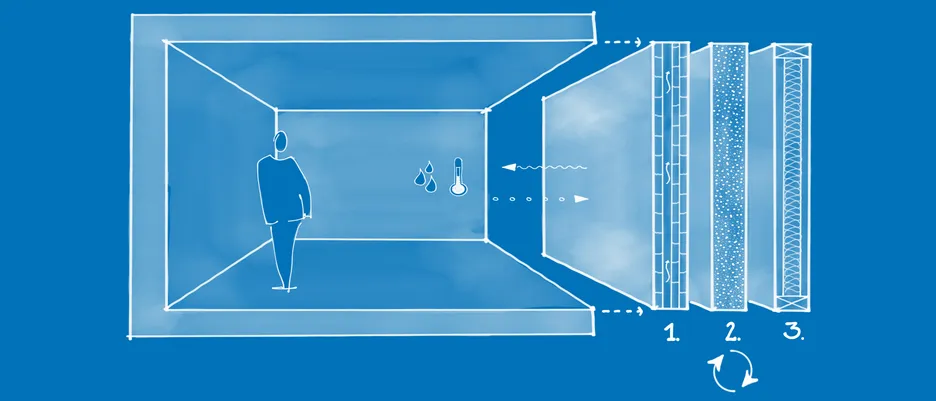
PhyTAB
Potentials of hygrothermally activated building components – energy-efficient space conditioning by means of an air-perfused solid wood component and hygroscopically optimised surfaces
Background
In a recently completed research project (SWD-10.08.18.7-15.26), an index for the heat storage capacity of different constructions was developed. Furthermore, it was investigated, to what extent prefabricated, thermally activated laminated timber components could serve for space conditioning. Milled ducts, where pre-conditioned air can flow through, achieve this thermal activation.
Research methodology
PhyTAB relies on simulations and measurements in the laboratory as well as in relevant environment, to investigate the ideal operation of thermally activated timber components (TAM), their integration into the building services and their hygrothermal behaviour. Additionally PhyTAB will assess to what extent a building can serve as a storage not only for sensible heat but also for latent heat through hygrothermal processes, to support intelligent load management for the power grid. The results will be validated by long-term field studies in test cubes under real-life conditions.
Research goals
This follow-up project validates the previous outcomes and further improves the potentials of TAMs. Therefore, PhyTAB aims to optimise the thermal effects of the components and to develop an ideal integration into the building services. Together with all partners, the consortium will define deployment scenarios with product and system specifications accounting design, production, assembly and disassembly and will develop practical design details compliant to building laws.
In addition, PhyTAB will investigate the effects of hygroscopic active surfaces through modelling, measuring and validation. Therefore, several surface materials and wall constructions (wood, clay and brick) are considered. At first, several preliminary studies are carried out in climate chambers and are then validated through long-term field studies in a climate test cube. These studies are also aiming to optimise the system operation. The test cube is therefore designed with a replaceable wall element for the use of different materials.